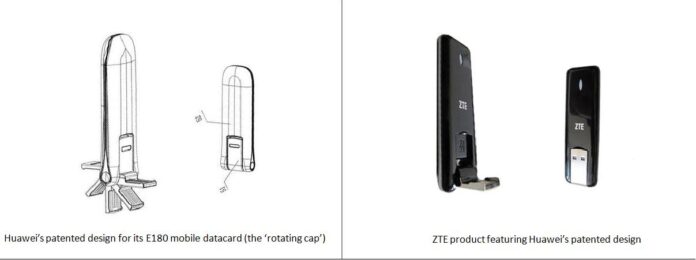Is there a more futile lawsuit than the one Huawei is currently pressing against ZTE?
If you’re not in the loop then I am very happy for you, but I am afraid I am going to bring you up to date right now. A couple of weeks back, Huawei put out a release saying it was pursuing ZTE in a German court for patent infringement, and had received a preliminary injunction against ZTE.
Ross Gan, Worldwide Head, Corporate Communications of Huawei, said, “Huawei has received the injunction as part of our legal claim that ZTE is infringing on our trademark. We welcome the decision, which will protect our innovation and intellectual property.”
This was a ticklesome proposition. Would we get to see these two Chinese vendors lift their drawers in public on some major issue of telecoms import?
After all, they compete across the gamut of telecoms infrastructure and are beginning to win more business from large operators in Europe – the traditional vendors’ home market. A fight between these two young giants would be tremendously entertaining for Europe’s equipment vendor Ancien Regime.
Sadly for those looking forward to a good dust up, it turned out that the case in fact centred around two minor design issues, one so trivial as to beggar belief.
One matter concerned a USB dongle with a port that swivelled so as to be housed within the the dongle itself when not in use. A useful, if not critical design issue, and if ZTE were to be found to have infringed a patent then worth answering to.
But in the other matter…Huawei was suing ZTE for the key issue of using a trademarked logo telling the world that its product was compliant with guidelines on hazardous materials. (Note, the pictures above and below were supplied by Huawei)

Manufacturers that have complied with RoHS can put a logo on their product saying so. There’s no one set logo for this – manufacturers can make their own logo. They usually do so in a roughly similar way (see below). Huawei’s case claims that ZTE used a logo that is trademarked to Huawei.

However, according to a recent submission from ZTE – the company only used the logo in question up until July 2009, when it started using a new logo. ZTE hasn’t said why it used the same logo as Huawei, despite us asking the question.
It seems to me there’s two explanations. ZTE had achieved RoHS compliance and couldn’t be bothered designing its own logo to say so, and just lifted Huawei’s. Not ideal, of course, but no real harm done. These are logos that sit, usually on the underside or back of a product, alongside all the serial numbers and other information consumers ignore. The other possible explanation is that ZTE had not achieved ROHS compliance and so as to avoid dealing direct with the compliance body, lifted a RoHS logo from any old where. That seems unlikely, but a lot more serious. As I said, we don’t know yet why ZTE appropriated “Huawei’s” logo.
In any case, ZTE says that it had stopped using the Huawei logo in question by July 2009. According to ZTE, only in September 2009 did Huawei start using the logo as a trademark, and it was May 2010 before the logo had approval from the EU. In fact, ZTE’s view is that Huawei only trademarked the logo so that it could then sue ZTE for breach of trademark – on a backdated basis.
A statement from ZTE said, “Obviously, Huawei intended to use the trademark right that it acquired on 27th May 2010 to sue ZTE for using the logo before 14th July, 2009 of the act. This is beyond the bounds of normal technology, marketing and legal litigation processes.”
It adds that in its view Huawei cannot claim a trademark around RoHS in any case, and is moving to have the trademark struck out.
So what is this action about, centering as it does around use of a logo that was not trademarked at the time of use, and which has not been used for approaching two years? Is this supposed to position Huawei as a key IPR holder, fearlessly defending its rights where it can – sending a message that the company is on the side of the angels when it comes to IPRs? Or is it supposed to somehow hint at more serious breaches by ZTE, a warning shot fired as part of a greater game? Or is it just craziness?
Take your pick.


